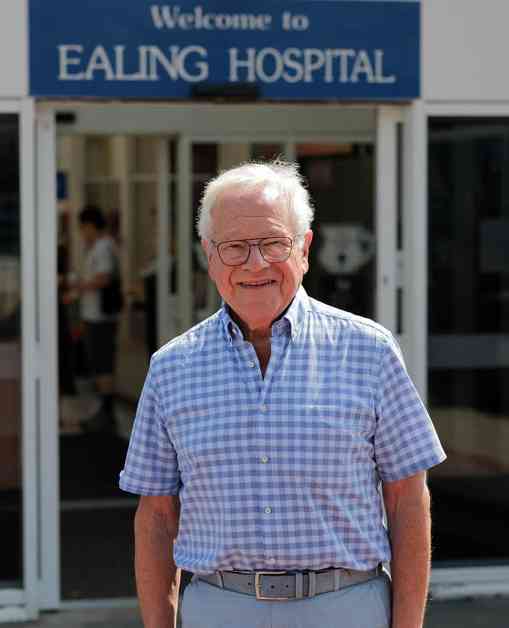Ealing Hospital is marking its 45th anniversary this autumn, and retired consultant Michael Rudolf is reminiscing about his 35 years at the hospital.
Michael, one of the original consultants hired when the hospital opened in 1979, initially had no intentions of becoming a doctor. He had studied organic chemistry but was drawn to the excitement and fulfillment he saw in medical students. So, he made the switch to studying the intricacies of life in the human cell rather than the contents of a test tube.
Before Ealing Hospital, small cottage hospitals like King Edward Memorial served the community. Michael spent two days a week at King Edward Memorial, where he experienced a close-knit community atmosphere. The transition to Ealing Hospital was a significant change due to its larger scale and modern facilities.
In the early days of Ealing Hospital, Michael recalls that the hospital was relatively quiet, with ample parking and a manageable number of patients in the A&E department. However, this tranquillity was short-lived as the hospital quickly grew in size and patient numbers.
During his time at the hospital, Michael observed a strong team spirit and camaraderie among staff members. They worked together seamlessly, especially during challenging events such as the Southall rail crash, a terrorist attack in Ealing Broadway, and the Southall Riots. Michael also served as the hospital’s medical director, overseeing its response to these incidents.
Reflecting on his career at Ealing Hospital, Michael feels fortunate to have been part of a time when clinical staff had more involvement in hospital management. There was less bureaucracy and fewer performance targets, allowing healthcare professionals to focus on delivering the best possible care to patients.
To commemorate the hospital’s 45 years of service, an exhibition showcasing the history of Ealing Hospital and its predecessors will be on display in October at the Galleria space, accessible through the main reception. This exhibition will provide visitors with a glimpse into the hospital’s evolution and the dedicated individuals who have contributed to its success over the years.












